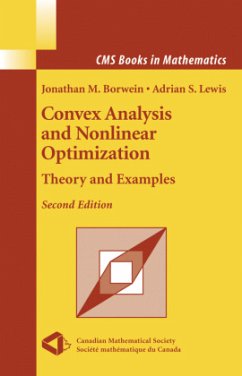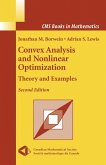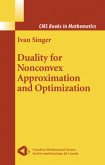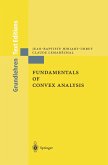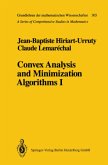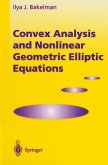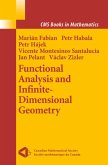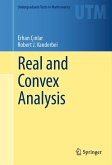Optimization is a rich and thriving mathematical discipline. The theory underlying current computational optimization techniques grows ever more sophisticated. The powerful and elegant language of convex analysis unifies much of this theory. The aim of this book is to provide a concise, accessible account of convex analysis and its applications and extensions, for a broad audience. It can serve as a teaching text, at roughly the level of first year graduate students. While the main body of the text is self-contained, each section concludes with an often extensive set of optional exercises. The new edition adds material on semismooth optimization, as well as several new proofs that will make this book even more self-contained.
From the reviews:
MATHEMATICAL REVIEWS
"The present book gives a concise treatment of the area, aiming to show the relevance in particular of new developments in nonsmooth analysis to optimization theory...The book is of a manageable size and as such should appeal to the student. Further, the proofs are generally short and snappy, revealing the power of the abstract structural approach and fruitful interplay of geometrical and topological ideas. However, considerable ground is covered and, as a graduate text should, it develops the subject up to the frontiers of current research, giving an idea of areas for further exploration...This text will give impetus to the teaching of analysis because it makes evident its significant applications in optimization. But it will also bring added attraction to the study of optimization because it reveals so much of its abstract structural base."
"The book is divided into 11 chapters and provides a comprehensive presentation of the main features of convex analysis and nonlinear optimisation. Each result is sustained by a set of theorems, propositions and corollaries and includes rigorous proofs and clarifying discussions. They are complemented by a series of theoretical exercises. ... This book is warmly recommended for an advanced course in analysis for mathematicians or as a first graduate course for students involved with optimization theory." (Carlos Narciso Bouza Herrera, Zentralblatt MATH, Vol. 1116 (18), 2007)
MATHEMATICAL REVIEWS
"The present book gives a concise treatment of the area, aiming to show the relevance in particular of new developments in nonsmooth analysis to optimization theory...The book is of a manageable size and as such should appeal to the student. Further, the proofs are generally short and snappy, revealing the power of the abstract structural approach and fruitful interplay of geometrical and topological ideas. However, considerable ground is covered and, as a graduate text should, it develops the subject up to the frontiers of current research, giving an idea of areas for further exploration...This text will give impetus to the teaching of analysis because it makes evident its significant applications in optimization. But it will also bring added attraction to the study of optimization because it reveals so much of its abstract structural base."
"The book is divided into 11 chapters and provides a comprehensive presentation of the main features of convex analysis and nonlinear optimisation. Each result is sustained by a set of theorems, propositions and corollaries and includes rigorous proofs and clarifying discussions. They are complemented by a series of theoretical exercises. ... This book is warmly recommended for an advanced course in analysis for mathematicians or as a first graduate course for students involved with optimization theory." (Carlos Narciso Bouza Herrera, Zentralblatt MATH, Vol. 1116 (18), 2007)
Aus den Rezensionen zur 2. Auflage: "Das vorliegende Werk bietet eine anspruchsvolle Einführung in die nichtlineare Optimierung in endlichdimensionalen Räumen. ... Die Autoren haben einige bemerkenswerte Entscheidungen bei der Zusammenstellung dieses Werkes getroffen. ... Der Stil ist informell, die Kapitel sind nur lose aufeinander aufbauend, es ist also nicht unbedingt erforderlich, das Buch von vorn nach hinten durchzuarbeiten. Dies macht es auch für fortgeschrittene Studentinnen und Studenten attraktiv." (F. Rendl, in: IMN - Internationale Mathematische Nachrichten, 2008, Issue 207, S. 50)

